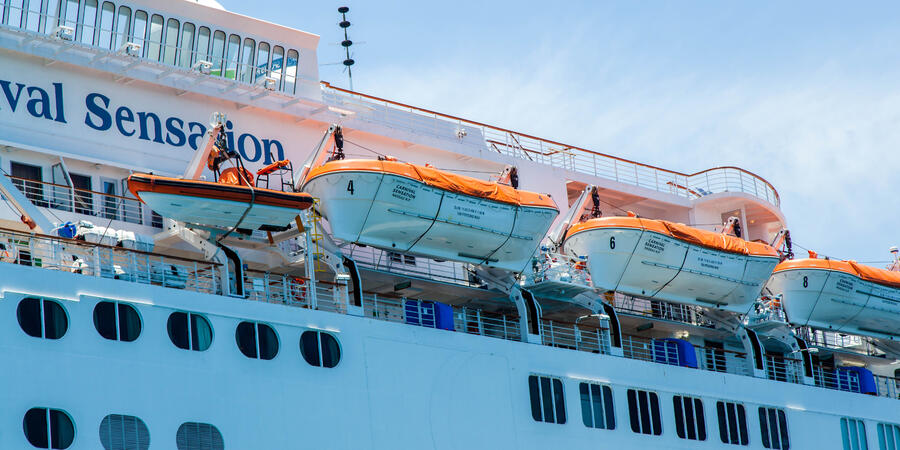Table Of Content

From the U-shaped hull to the weight distribution and stabilizing systems, every element works together to keep these massive ships upright and safe. In this article, we’ll dive deeper into the design secrets that make it all possible, and explore the fascinating engineering behind the world’s most impressive cruise ships. Proper weight distribution is essential for ensuring that a cruise ship stays afloat.
How do cruise ships stay afloat with so much weight?
As far as why ships float at all, I’m not sure but I think it’s related to buoyancy. Buoyant objects tend to rise up out of the water while nonbuoyant ones fall back down. So by having lots of air inside your hull, you’re making yourself heavier so you don’t sink. It doesn’t matter whether or not the air is actually moving around though – it only matters that the volume of air inside the hull is greater than the volume outside. Now let’s say that the ship sinks slightly below neutral buoyancy.
Handling Waves and Motion
So how do cruise ship engineers achieve buoyancy during construction? The solution is simple – they choose lightweight, sturdy materials and disperse the weight of the ship across the hull, which we’ll explain in more detail later. Cruise ships have a U-shaped hull that displaces thousands of tons of water. This water is pushed down and to the sides, but the ship doesn't sink because the density of the water pushes back against the hull. When I first saw a cruise ship, I was amazed at its sheer size and weight.
How Do Cruise Ships Float When They're So Heavy? Trusted Since 1922 - Reader's Digest
How Do Cruise Ships Float When They're So Heavy? Trusted Since 1922.
Posted: Fri, 28 Apr 2023 07:00:00 GMT [source]
Come aboard our adults-only cruises for a kids-free getaway at sea.
An airplane doesn’t really “float” as much as it flies through the air. It uses wings to create lift which allows it to fly without sinking. However, when landing, the plane needs to sink back into the ground to stop from crashing. In the unlikely event of a potential capsizing, emergency response plans are in place.
Displacement and Stability
Cruise ships can sail the waters thanks to their designs, which manipulate the physical principle of buoyancy. Colossal vessels stay above water by displacing an amount of water equal to their mass (the wide, U-shaped hull helps with this). As the ship moves forward and pushes water away, the water is ceaselessly trying to return to fill the space, with an energy that forces the ship upward. A cruise ship floats because although it is made of dense steel its shape and design enable it to enclose large volumes of air, the overall cruise ship’s density is less than the water it displaces. Essentially, cruise ships can stay above the water as long as they can displace an equal amount of water to their mass. This means that most cruise ships are best suited to sailing around seas and oceans where there is more than enough water.
This is achieved by placing heavy items like engines, fuel tanks, and water tanks at the bottom of the ship. The ship's draft is also carefully calculated to ensure that it remains stable in the water. As I research how cruise ships float, I have learned that displacement plays a crucial role.
Case Study: Royal Caribbean's Wonder of The Seas
The Interesting Way Cruise Ships Float Even Though They're So Heavy - MSN
The Interesting Way Cruise Ships Float Even Though They're So Heavy.
Posted: Sun, 14 Apr 2024 04:40:34 GMT [source]
She hails from the sun-kissed regions of South Florida, residing within a stone’s throw of the bustling Fort Lauderdale and Miami cruise ports. As a native Floridian, Judith’s love for the ocean and cruising extends as far back as her memory can recall. He used the principle to figure out if a goldsmith was cutting his gold with a less-dense metal, such as silver (as the story goes). Whether you cruise multiple times per year or you're new to cruising, the goal of Royal Caribbean Blog is for it to be a useful resource for keeping up to date with what's new and exciting with Royal Caribbean.
With this design, even the largest cruise ships in the world can stay buoyant and cruise through the water with ease. Even a large mass, like a cruise ship, will stay afloat due to the principle of buoyancy – the mass is equal to the upward pressure of the water. To minimize rocking, it keeps a low center of gravity by keeping heavy equipment below deck and using ballast tanks. Although made of steel, much of a cruise ship hull is hollow, less dense than the amount of water it displaces. The ship’s weight is spread over a large volume, including a wide hull and overall surface area, which spread over a wider area of water and offers more of an upward force, keeping it afloat.

There are several precautions and measures taken to ensure the safety of passengers and crew on board. In this section, I will discuss some of the safety measures and precautions taken on a cruise ship. To ensure a smooth ride for passengers, cruise ships are equipped with stabilizers. These are fins that extend from the sides of the ship and help to reduce the amount of rolling and pitching caused by waves.
Obviously, a cruise ship wouldn’t be able to sail on a small body of water that wouldn’t be able to displace the weight of a ship, which is why you won’t see any floating on smaller lakes. For any object to float, the downward force of the object on the water should be less than the upward force of the water pushing back against the object. Cruise ship stability is also dependent on the shape of the hull. Fast boats tend to have a V-shaped hull to cut through the waves, while cruise ships have a U-shaped hull. The rounded bottom of the ship may cause it to move through the water more slowly, but it also limits rocking and motion. This is a good thing, as anyone prone to seasickness will tell you.
Now we’re getting closer to understanding how cruise ships stay afloat. In order to understand this concept better, let’s take a look at some examples of different kinds of boats. Engineers are careful to keep the average density of a ship (considering both the physical weight of the vessel as well as all the air) less than the average density of the water. To the seas, a cruise ship is nothing more than a leaf drifting effortlessly along the surface. Maintaining stability on a cruise ship involves adjusting weight distribution, using mechanical stabilizing systems, and monitoring weather-related risks.
So now that we know how cruise ships float, let’s get back to our original question. Because of this, they require a lot less energy than traditional boats to remain upright. Another reason is that they are built specifically to withstand rough weather conditions. Finally, they are designed to sit above the waves rather than ride along side of them. To keep afloat, the cruise ship must be able to displace its weight in water before being submerged. That’s a lot easier to do if the cruise ship is constructed in a way so that it’s less dense than the water below it.
These ballast tanks, in effect, allow the weight of the ship to be controlled and stabilized. They control the weight of the ship and lower its center of gravity, keeping it stable. When it comes to cruise ships, you want the ship to have a low center of gravity as it keeps it stable in the water. A stable center of gravity is key to keeping the cruise ship upright and not tipping over. Cruise ships are designed to minimize the dangers of tipping over. They are specifically constructed to be as buoyant as possible.
” According to mathematics legend, the principle of buoyancy was actually worked out in a bathtub. The answer to this question boils down to materials, design, water displacement, and buoyancy. Another major difference between a cruise ship and a boat is the design of the hull.

No comments:
Post a Comment